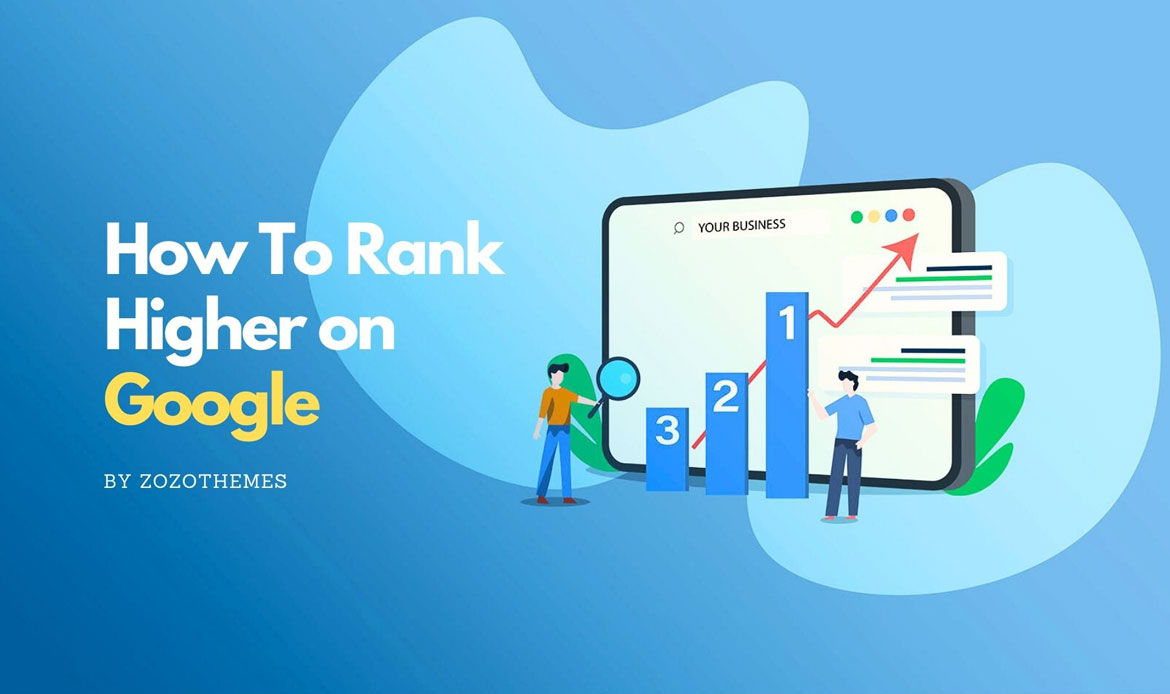
Achieving the coveted number one spot on Google’s search engine results page (SERP) is a goal for businesses, bloggers, and digital marketers alike. Ranking at the top can lead to increased traffic, higher brand visibility, and significant revenue growth. However, with millions of websites competing for attention, getting to that top spot requires a strategic approach and a deep understanding of Google’s ranking algorithms. In this article, we’ll explore the key steps you can take to improve your chances of ranking number one on Google.
Table of Contents
1. Understand Google’s Ranking Factors
Before you can aim for the top spot on Google, it’s essential to understand how Google ranks pages. Google uses a complex algorithm with over 200 ranking factors to determine the order of search results. While Google doesn’t disclose all these factors, SEO experts have identified several key elements that significantly impact rankings:
- Relevance: Google aims to deliver the most relevant results for a user’s search query. This means your content must match the intent behind the search terms.
- Authority: Websites with high authority are more likely to rank higher. Authority is often measured by the quality and quantity of backlinks from other reputable sites.
- User Experience: Google prioritizes sites that offer a positive user experience, including fast loading times, mobile-friendliness, and easy navigation.
- Content Quality: High-quality, original, and valuable content is crucial. Google rewards content that thoroughly answers users’ queries.
- Technical SEO: Proper use of technical elements like schema markup, XML sitemaps, and secure HTTPS protocols can improve your site’s ranking.
Understanding these factors helps you align your SEO strategy with what Google values most.
2. Conduct Comprehensive Keyword Research
Keyword research is the foundation of any successful SEO strategy. To rank number one on Google, you need to identify the right keywords to target. These are the words and phrases that potential visitors are typing into the search engine. Here’s how to conduct effective keyword research:
- Use Keyword Research Tools: Tools like Google Keyword Planner, Ahrefs, SEMrush, and Ubersuggest can help you discover high-volume, low-competition keywords relevant to your niche.
- Focus on Long-Tail Keywords: Long-tail keywords are longer, more specific phrases that often have less competition. While they may have lower search volumes, they are easier to rank for and often have higher conversion rates.
- Analyze Competitor Keywords: Look at the keywords your competitors are ranking for. This can give you insights into what works in your industry and help you identify gaps you can exploit.
- Understand Search Intent: It’s crucial to understand the intent behind a keyword. Is the user looking for information, trying to make a purchase, or seeking a specific website? Aligning your content with the correct intent increases your chances of ranking.
Once you’ve identified your target keywords, incorporate them naturally into your content, including in titles, headings, and throughout the body text.
3. Create High-Quality, Valuable Content
Content is king in the world of SEO. To rank number one on Google, your content must be the best answer to the searcher’s query. Here’s how to create content that ranks:
- Write In-Depth Content: Longer, comprehensive content tends to rank higher on Google. Aim to thoroughly cover your topic, answering all potential questions a user might have. Articles that are 1,500-2,500 words often perform well.
- Use a Clear, Engaging Structure: Break your content into clear sections with headings and subheadings. Use bullet points, numbered lists, and short paragraphs to make the content easy to read.
- Incorporate Visuals: Use images, infographics, videos, and charts to enhance your content. Visual content can improve user engagement and increase the time visitors spend on your page, both of which are positive ranking signals.
- Update Your Content Regularly: Google favors fresh content. Regularly update your existing content to keep it relevant and accurate. Adding new sections, updating statistics, or refreshing old information can help maintain or improve your rankings.
- Optimize for Featured Snippets: Featured snippets are the short answers that appear at the top of Google’s search results. To optimize for these, structure your content to answer questions directly and concisely, using bullet points or numbered lists when appropriate.
By focusing on high-quality, valuable content, you not only increase your chances of ranking number one but also build trust and authority with your audience.
4. Optimize On-Page SEO
On-page SEO involves optimizing individual pages on your website to rank higher and earn more relevant traffic. Here are some key on-page SEO practices:
- Title Tags: The title tag is one of the most important on-page factors. It should be concise, include your target keyword, and clearly convey what the page is about. Aim for 50-60 characters to ensure it displays correctly in search results.
- Meta Descriptions: While not a direct ranking factor, a well-written meta description can improve click-through rates (CTR). Summarize the content of the page and include a call to action.
- URL Structure: Keep URLs short, descriptive, and include your target keyword. Avoid using unnecessary numbers or characters.
- Internal Linking: Link to other relevant pages on your website to keep visitors engaged and help Google understand the structure of your site. Use descriptive anchor text for your internal links.
- Alt Text for Images: Use alt text to describe your images. This helps Google understand the content of your images and can improve your chances of ranking in image search results.
On-page SEO is all about making your content as accessible and understandable to search engines as possible. By following these practices, you improve your site’s ability to rank well.
5. Build High-Quality Backlinks
Backlinks, or links from other websites to your site, are one of the most powerful ranking factors in Google’s algorithm. High-quality backlinks signal to Google that your content is authoritative and trustworthy. Here’s how to build them:
- Guest Blogging: Write guest posts for reputable websites in your industry. In return, you’ll often get a link back to your site.
- Create Link-Worthy Content: Publish original research, in-depth guides, or unique insights that others will want to link to as a reference.
- Reach Out for Backlinks: Identify websites that have linked to similar content and reach out to them, suggesting your content as a better or additional resource.
- Broken Link Building: Find broken links on other websites and suggest your content as a replacement. This helps both you and the website owner.
- Leverage Social Media: Share your content on social media platforms to increase its visibility. If your content is valuable, others may link to it from their websites or blogs.
Remember, not all backlinks are created equal. Focus on earning links from reputable, high-authority websites relevant to your industry.
6. Enhance User Experience (UX)
Google’s algorithm increasingly prioritizes websites that offer a great user experience. If visitors find your site easy to use and navigate, they’re more likely to stay longer and return, both of which are positive signals to Google. Here’s how to enhance UX:
- Mobile-Friendliness: Ensure your website is fully responsive and provides a seamless experience on all devices. Google now uses mobile-first indexing, meaning it primarily uses the mobile version of your site for ranking purposes.
- Page Speed: Fast-loading pages are crucial for both user satisfaction and SEO. Use tools like Google PageSpeed Insights to identify and fix issues that are slowing down your site.
- Easy Navigation: Design a clear, intuitive navigation structure that helps users find what they’re looking for quickly. Use descriptive menu labels and a logical hierarchy.
- Reduce Pop-Ups and Ads: While pop-ups can be effective, they can also be intrusive. Ensure they don’t disrupt the user experience. Too many ads can also lead to a poor experience and negatively impact your rankings.
Improving UX not only helps your SEO efforts but also increases the likelihood of converting visitors into customers.
7. Monitor and Analyze Performance
SEO is an ongoing process, and it’s crucial to regularly monitor and analyze your website’s performance. Use tools like Google Analytics and Google Search Console to track key metrics such as:
- Organic Traffic: Monitor the number of visitors coming from search engines and the keywords they’re using to find your site.
- Bounce Rate: A high bounce rate may indicate that visitors aren’t finding what they’re looking for. Identify pages with high bounce rates and work on improving their content or UX.
- Click-Through Rate (CTR): Analyze the CTR of your pages in search results. A low CTR might mean your title tags or meta descriptions need improvement.
- Backlinks: Use tools like Ahrefs or Moz to track the number and quality of backlinks to your site.
By analyzing this data, you can identify what’s working and what needs improvement, allowing you to refine your SEO strategy continuously.
Conclusion
Ranking number one on Google is a challenging but achievable goal with the right strategy. By understanding Google’s ranking factors, conducting thorough keyword research, creating high-quality content, optimizing on-page SEO, building backlinks, enhancing user experience, and monitoring performance, you can improve your chances of reaching the top spot.
Remember, SEO is not a one-time effort but an ongoing process. The digital landscape is always evolving, and staying updated with the latest SEO trends and best practices is crucial for maintaining and improving your rankings. With dedication and persistence, you can secure that coveted number one position on Google and enjoy the benefits of increased visibility, traffic, and success.


